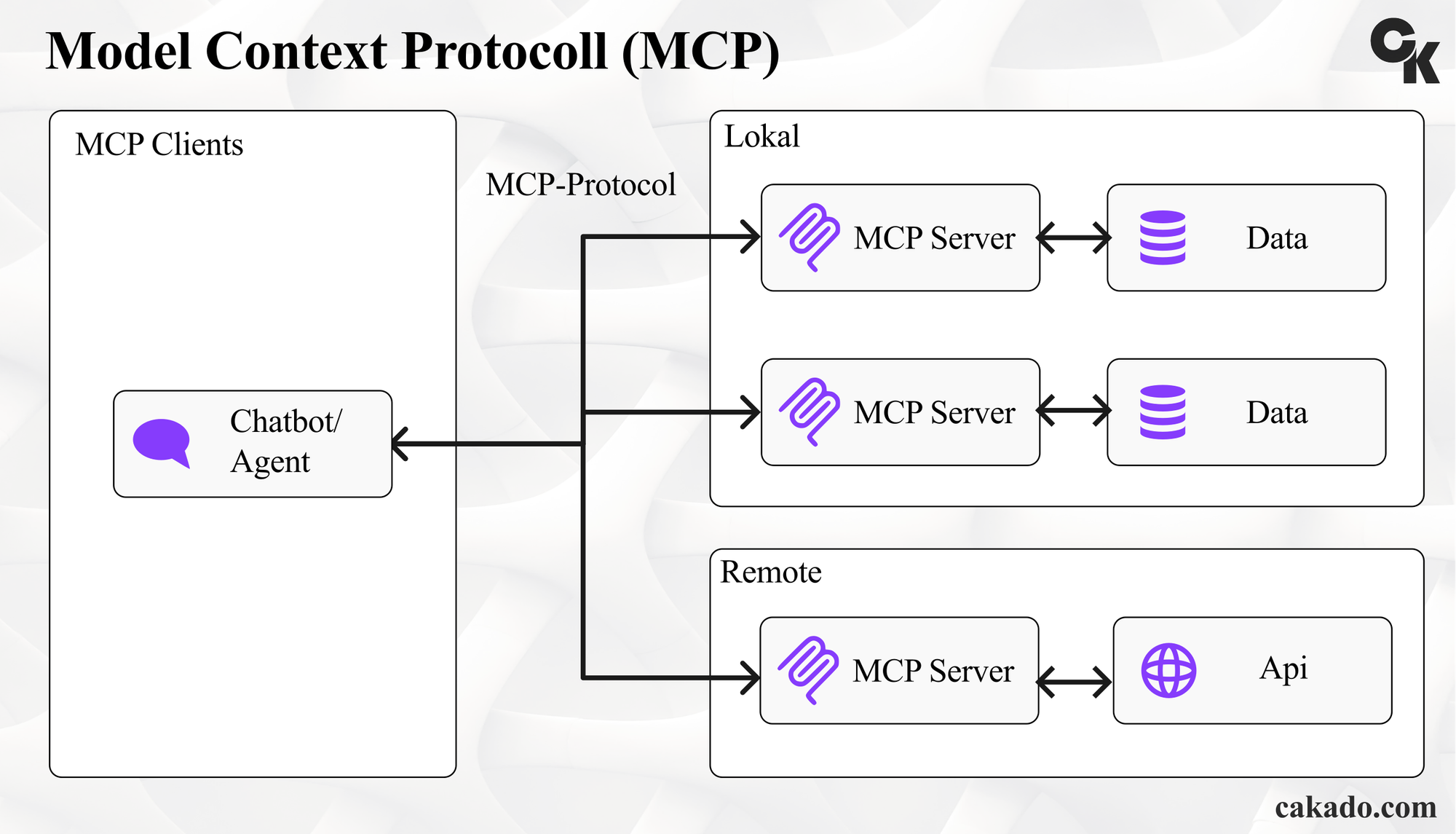Revolutionary lingua franca for AI agents: What is MCP?
MCP provides a standardized interface to standardize the use of tools and thus significantly increase the efficiency and functionality of AI applications.

We have already dealt with agents in the past. In other words, a language model with provided tools that can be used. This is exactly where the biggest weakness in scalability lies: each tool has to be created and configured individually. The Model Context Protocol (MCP) offers an innovative solution to this problem. But what exactly is the MCP and why is it relevant right now?
MCP provides a standardized interface to standardize the use of tools and thus significantly increase the efficiency and functionality of AI applications.
What exactly is the Model Context Protocol (MCP)?
If you've ever opened a website, you've probably seen the terms HTTP and HTTPS in the address bar. These are so-called protocols. Put simply, these protocols describe a standardized language for how web servers talk to each other and exchange data.
The Model Context Protocol developed by Anthropic is basically nothing else. Only for AIs. MCP is an open protocol that facilitates the integration of LLM applications with external data sources and tools. It enables developers to create AI-driven interfaces that can access rich data contexts to deliver more accurate and relevant results.
The protocol aims to enable users to access, query and utilize various data sources to improve the decision-making capabilities of their applications. This can range from the automation of business processes to the development of complex AI-supported systems.
How does the Model Context Protocol (MCP) work?
The protocol serves as a standard for communication between so-called MCP clients and MCP servers. An MCP client can be an AI application, such as chatbots or other AI agents. MCP servers then provide the tools that the host can use. This can be, for example, a request to a third-party API or a system setting on the computer.

The process looks like this:
- The user writes a prompt to a chatbot that represents the MCP client ("What's the weather like?").
- The client then asks the MCP server for tools to fulfill the requests in the prompt. So basically, "What tools can you use?"
- The MCP server responds with a list of possible tools that the client can use ("I can give you weather data").
- The MCP client selects the appropriate tool based on the prompt and requests execution ("Okay, give me the weather data for today").
- The MCP server executes the correct tool and returns the result to the client. ("Okay, here is the weather data for today.")
- The client then returns the result to the user together with a response in natural language. ("The weather is nice today, it's 30 °C and the sun is shining.")
Why should I use MCP?
Now, of course, the question arises: Why should developers use MCP?
Simple - standards allow us to scale and build on each other's successes. With MCP, it is no longer necessary to configure tools individually and tools can be built that can be used independently of providers (OpenAI, Anthropic or other language models). For example, companies such as Google can publish their own MCP servers that developers of AI applications can use to interact with their services. There is already a wide range of MCP servers that can be used free of charge: https://mcp.so/
Developers can build their own MCP servers or use official servers from providers. MCP servers not only provide interfaces to remote systems, but also offer the option of being used locally, for example to interact with the PC currently in use or to retrieve a local database.
Conclusion
The Model Context Protocol (MCP) represents a significant advance in the integration of AI applications. The ability to communicate seamlessly and efficiently between different systems is crucial for the success of technologies in a competitive environment. The standards set by the MCP could not only speed up development, but also improve the efficiency of applications. If you are developing your own AI applications, you should consider the possibilities of this protocol to design innovative and powerful AI applications that meet the demands of the future.




